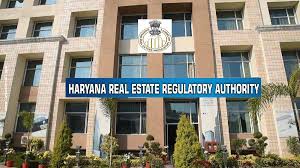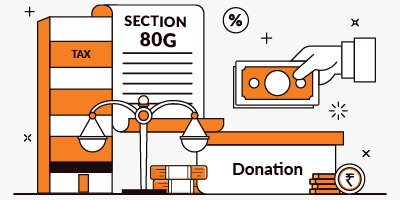1. This appeal arises from the decree of the Assistant District Judge (2) Cachar in Title Appeal No. 130 of 1975 allowing the appeal by setting aside the decree passed by the Sadar Munsiff (1) in Title Suit No. 109 of 1968.
2. Facts,The plaintiffs instituted the suit for confirmation of possession of the suit land described in Schedule to the plaint after declaration of their occupancy rights, or alternatively khas possession if they are dispossessed in the meantime. The case of the plaintiffs, in brief, is that the suit land (agricultural land) along with another homestead land were tenanted by Guljar Rabidas from Surjamani Roy, father of the defendants on payment of rent of 42 mounds of paddy per year for the suit land and Rs. 10/ for the homestead land. Surjamani died about 3 years ago and Guljar died about 10 years back. After the death of Guljar, the plaintiffs continued to be the tenants of Surajmani by paying the rent. In the year 1966, when the plaintiffs were cultivating paddy land, the defendant 1 initiated a proceeding under section 145, CrPC in respect of a part of the suit land, viz the land described in Schedule ''Khas''. In the proceeding, possession was declared in favour of the defendants. As the defendants were trying to dispossess the plaintiffs, the plaintiffs instituted the suit.
The case of the defendants is that, during his life time, Surjamani out of sympathy allowed Guljar Rabidas to reside in a half kedar of homestead land near the suit land on the condition that he will serve Surjamani. Guljar lived there constructing a temporary house. After the death of Guljar, his sons, the plaintiffs, continued to live in the said homestead land. Guljar was never tenant of the suit land. The suit land has always been in possession of the defendants cultivated by the defendant 4 Smarendra Kumar Roy by engaging their servants on behalf of the defendants. The plaintiffs were trying to take possession of the suit land and hence the proceeding under section 145, CrPC.
3. The trial Court dismissed the suit with costs. On appeal, the lower appellate Court allowed the appeal and decreed the suit. Hence this appeal by the defendants.
4. The lower appellate Court relied on Ext 2, certified copy of an order dated 22. 9. 69 passed in D. P. Case No. 250 of 196970 and Khatian Nos 6, 8, 9, 10, 11 and 13 issued in the name of the plaintiffs. The lower appellate Court also considered Exts 1 and 1 (1), the receipts, showing payment of rent @ Rs. 10/ per year for the homestead land occupied by the defendants and has held that Exts 1 and 1 (1) belies the defendants'' plea that the plaintiffs'' father Guljar was allowed to reside in the homestead land out of sympathy free from rent. The lower appellate Court has also held that DWs 2 and 3 admitted that the plaintiffs were in possession of the suit land prior to 1965.
5. Mr. S. K. Sen, the learned counsel for the appellants, has contended that in view of the decision of this Court in Girish Ch. vs. Munilal Hazam, AIR 1960 Assam 59, the Revenue Court has no jurisdiction to declare status of the plaintiffs as occupancy tenants in D. P. Case No 150 of 196970 As the appeal can be disposed of on other materials, I prefer to leave this question to be dealt with later, if ever, it is alleged.
6. Mr. Sen has further contended that Khatians on which the lower appellate Court has relied, were filed without the knowledge of the defendantappellants. The contention of Mr. Sen cannot be accepted for the reasons that the order dated 22.9.78 of the lower appellate Court indicates that the parties were present on 22. 9. 78 when the petition No. 613 for allowing the plaintiffs to file documents was disposed of and the appeal was heard on 11. 5. 81. The Khatians shows that they were issued under the Assam (Temporarily Settled Areas) Tenancy Act, 1971 in the name of the plaintiffs.
7. As regards the findings of the lower appellate Court that DWs 2 and 3 admitted that the plaintiffs were in possession of the suit land at least prior to 1965, evidence of DW 2 is that he saw the plaintiffs having their land cultivated by Mantair and Chandra Singh since the year 1965. Mr. Sen, the learned counsel for the appellants, has submitted that the word ''plaintiffs'' in the evidence of DW 2 has been wrongly written in place of the word ''defendants''. Be that as it may, even if it is assumed that the word ''plaintiffs'' should have been ''defendants'', the evidence of DW 2 will only show that the defendants have been possessing the suit land from the year 1965 and not before 1965.But DW 3, in the crossexamination, has stated : "Now the plaintiffs have been cultivating the land for the last 6/7 years". Therefore, the evidence of DW 3 shows that the plaintiffs have been in continuous possession for some years.
8. It has already been concluded that the witnesses of the defendants admitted that the plaintiffs have been in continuous possession for some years. The case and evidence of the plaintiffs is that they and/or their father have been in possession of the suit land as tenants for about 40 years. Injunction order was passed against the defendants from interfering with the possession of the plaintiffs of the suit land. The finding of the lower appellate Court is that the case of the defendants that the defendants'' father allowed Guljar Rabidas to occupy the homestead land free from rent is not true is based on evidence.
9. Considering the overall circumstances or surrounding circumstances, I am of the view that an inference of continuity of possession of the plaintiffs both forwards and backwards is to be presumed under illustration (d) to section 114 of the Evidence Act. Therefore, the plaintiffs and/or their father have been possessing continuously for more than 40 years. The possession is ninetenths of the law Although this old phrase is not to be taken as true to the full extent, so as to mean that a person in possession can only be ousted by one whose title is nine times better than his, section 110 of the Evidence Act recognises a presumption that the person in possession also has good title against wrongdoer.
10. For the reasons stated above, the conclusion and findings of the lower appellate Court that the plaintiffs have been in possession of the suit land as tenants cannot be interfered with. In the result the appeal is dismissed. No costs.

